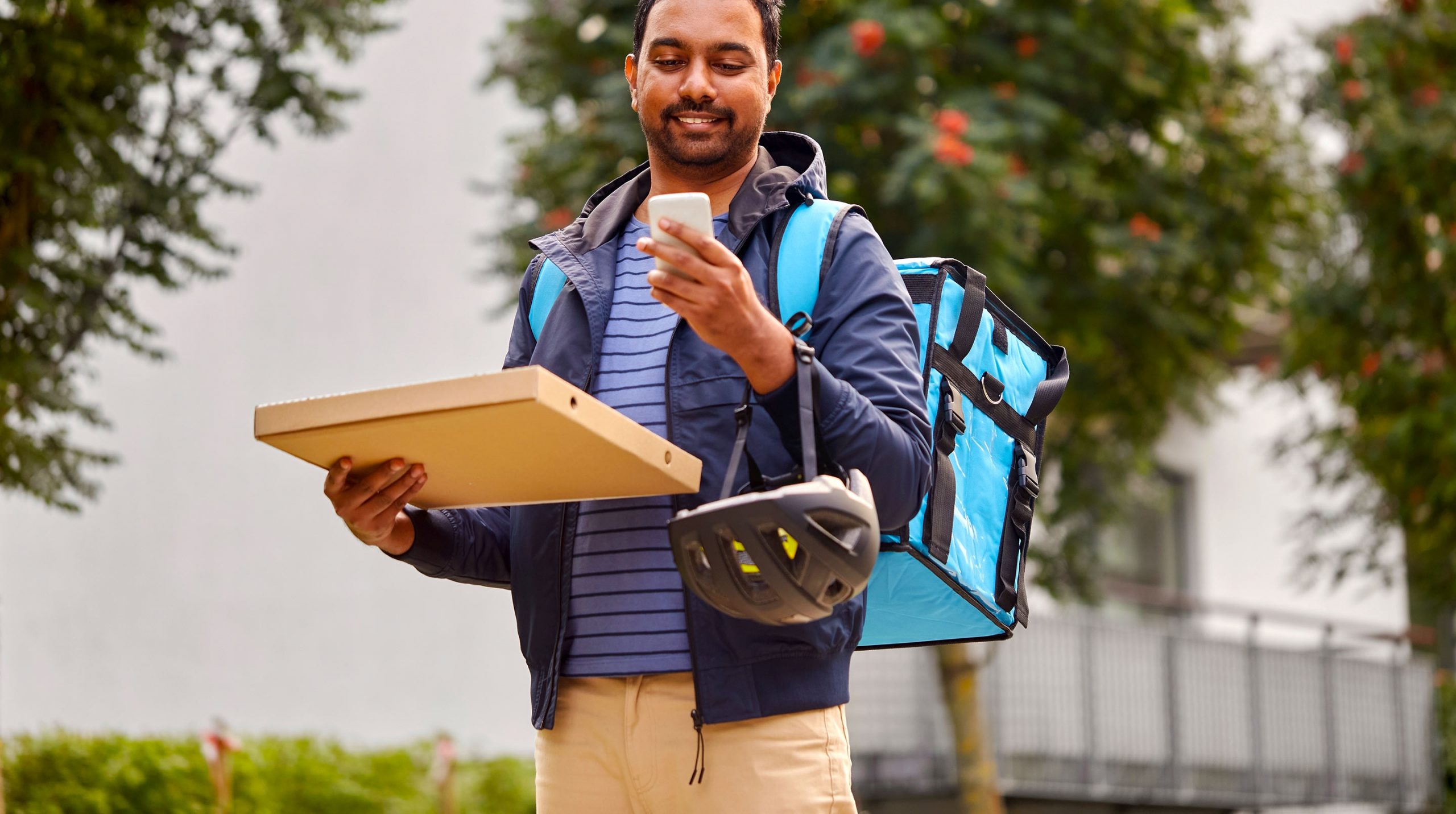MediaAgility was acquired by Persistent in May 2022 and its capabilities form the foundation for Persistent’s Google Business Unit. As a Google Cloud Partner and a strategic IT Transformation services provider, the Google Business Unit is focused on delivering transformational services with cloud-native solutions that enable businesses to stay relevant and benefit from the public cloud platform capabilities.
Licious uses Google Maps Platform to save time all along its perishable goods supply chain from farm pick-up to delivery, to make sure its products arrive fresh and within the promised 90 minutes.
Results:
- Ensures a smooth post-order customer experience by enabling customers to enter accurate order addresses
- Helps Licious achieve its target to deliver in <90 minutes by calculating optimal itineraries with the Routes API
- Helps to maintain product quality along cold-chain supply chain by tracking the movement of orders at every stage
- Optimizes supply and demand logistics between processing centers, distribution hubs, and customer addresses with real-time product location data
50% fewer calls from customers checking order status
When you think Indian cuisine, vegetarian dishes such as dal or paneer curry probably come to mind first. But with 72% of Indians enjoying meat and seafood-based dishes on a regular basis, meat and seafood are an important part of the nation’s cuisine. In fact, India is the second fastest growing meat and poultry market globally. This market is worth an estimated $40 million and is driven by the changing lifestyles of India’s 1.3 billion population. With increased urbanization, people are commuting longer distances and cooking less often. More and more, they value convenience, as well as guarantees of quality when buying fresh meat and seafood products.
That’s where Licious comes in. The company aims to radically transform how consumers buy fresh meat and seafood by enabling them to order online and receive packaged meat, seafood, ready-to-eat, and ready-to-cook products, delivered to their doorsteps within 90 minutes of ordering. Apart from being convenient, this means the customer knows the product they are receiving is high quality, safe, and hygienic.
We’re a hyper local platform that promises our customers that we will deliver their fresh meat or seafood within 90 minutes, and operates a cold-chain logistics ecosystem. We turned to Google Maps Platform to help us build a better customer experience and make sure we can deliver on our promise
Bhaskar Raju Konduru, CTO , Licious
Since it was founded in 2015, Licious has expanded its operations to seven of India’s urban centers: Bengaluru, its initial location, as well as Chandigarh, Chennai, Delhi (NCR), Hyderabad, Mumbai, and Pune. It serves a wide range of consumers, from working professionals to home-makers, but one thing unites them: their love for great quality meat and the pleasure of enjoying a hearty meal with family and friends. They want to purchase high-quality food products that are prepared according to international food safety standards, from a brand they trust.
To make it possible, the company’s founders decided they needed to own and control the entire supply chain, from farm to fork. It operates a cold-chain supply chain, which means it maintains a consistent temperature of zero to four degrees celsius as meat travels from the farm to the processing center and beyond. Key to this approach is the use of technology at every step, to optimize and keep the price point acceptable while adhering to stringent standards. For example, Licious uses algorithms to predict customer demand, and blockchain technology to keep track of specific animals along the supply chain, and offer increased transparency about how they are farmed.
For its logistics and delivery operations, Licious requires highly accurate real-time location data in order to keep track of where its products are en route to the customer. It decided to work with Google Maps Platform from the start, to provide the location data required for everything from locating and tracking specific farm pick-ups, validating customers’ addresses, calculating delivery times, and mapping out the route for couriers.
“We’re a hyper local platform that promises deliveries of fresh meat or seafood within 90 minutes, and we operate a cold-chain logistics ecosystem,” says Bhaskar Raju Konduru, CTO at Licious. “We turned to Google Maps Platform to help us build a better customer experience and make sure we can deliver on our promise.”
Locating customers accurately, so deliveries don’t go astray
One of the key points in any online customer experience is the delivery of the product. This is especially true as Licious’ products are highly perishable, so on-time delivery is critical to freshness. When it first built its online platform, Licious delivery drivers were having problems locating certain customer addresses. “In many cities in India, the urban planning is chaotic and it’s hard to locate exact addresses without geographic coordinates,” explains Bhaskar. “Previously, we had some difficulty locating addresses, leading to customer complaints and cancelled orders.”
To meet this challenge, Licious built a solution using Places in Google Maps Platform. Now, before a customer begins browsing on the platform, they are invited to enter their location. Using Place Search and Place Autocomplete, the customer’s address can easily be entered in the web portal and then translated into coordinates using the Geocoding API, to ensure the customer’s location is registered accurately.
Before, our customer support center used to receive many calls from customers asking where their orders were. Since starting to use Places API, we have reduced our missed deliveries by 30%, and our customer satisfaction has grown by 30%
Bhaskar Raju Konduru, CTO , Licious
By feeding this information into the backend of the system, the web portal displays the products that are available in the customer’s particular area. Once they have ordered, the accurate address coordinates are used along with the Distance Matrix API to calculate the estimated delivery time to forward on to the customer.
“Before, our customer support center used to receive many calls from customers asking where their orders were,” says Bhaskar. “Since starting to use Places API, we have reduced our missed deliveries by 30%, and our customer satisfaction has grown by 30%.”
Saving time along the supply chain for the freshest products
It’s not just for verifying customer addresses and calculating delivery times that Licious is leveraging Google Maps Platform. It’s helping Licious to save time all along the supply chain, to make sure that its products are as fresh as they can be. “We work with multiple stakeholders and have to ensure traceability at every touchpoint,” says Bhaskar.
We’ve got the delivery experience right with the support of Google Maps Platform, helping us continue to maintain a 90% repeat customer rate. That’s very important for building our brand, and enables us to focus on our core business and creating new customizations
Bhaskar Raju Konduru, CTO , Licious
He explains that with Google Maps Platform, Licious is able to track exactly where its products are en route to our distribution centers. Once the delivery driver has the product and is ready to leave the depot, Licious uses data from Google Maps Platform to assign orders to particular hubs and improve their fleet management by using Routes to calculate the best sequence for delivery drivers to drop-off orders.
“Every time we can make a process more efficient, we are helping preserve the freshness of the product,” he says. “Google Maps Platform is helping us to achieve greater transparency and efficiency in our supply chain ecosystem, to build the best possible workflows.”
In order to get the most from Google Maps Platform, Licious is working with implementation partner MediaAgility. “The team keeps us up-to-date with all the new improvements to Google Maps Platform, and helps us to scale efficiently, controlling our costs,” says Bhaskar. “The team is just a call away, and able to use its extensive knowledge to review how we’re using APIs and advise us on how new features might impact our consumption.”
Achieving a 90% reorder rate with fewer call center complaints
By reducing call center complaints relating to missed deliveries by 50%, Licious is better able to focus on providing a more personalized service, and truly live up to its call center’s name: the Customer Happiness Center. “We’ve got the delivery experience right with the support of Google Maps Platform, helping us continue to maintain a 90% repeat customer rate,” says Bhaskar. “That’s very important for building our brand, and enables us to focus on our core business and on creating new customizations.”
Using Google Maps Platform is also supporting Licious in scaling its business. It’s been enjoying a 300% growth rate over the past five years, and is continuing to grow. “Google Maps Platform is great because it’s easy to use, we can plug-and-play to create new solutions for our many use cases, to identify gaps and enable new features,” says Bhaskar. “We can build the right models, and learn on the go.”
Shishir Gokhale, Partner at MediaAgility adds: “The hyperlocal business is a highly competitive and evolving space in India. Innovations are happening daily to stay ahead of the competition and to improve consumer experiences. With Google Maps Platform and MediaAgility, Licious has really created differentiation in the meat delivery business, and we’re proud to be a part of its journey.”
Licious is now working on new features for the portal such as personalized recommendations, which will be based on factors such as previous purchases, as well as developing new brick-and-mortar experience centers. “We want to become a truly omni-channel operation,” says Bhaskar. “If for any reason delivery is disrupted by traffic or a break-down, customers will be able to pick up their order at a Licious Experience Center.”
That requires increased optimization of logistics between the processing hubs and stores, so Licious is working on defining clusters dynamically using Google Maps Platform to help fulfill supply and demand curves efficiently in its processing centers and delivery hubs.
“We have lots of innovations planned along with our roadmap, to make more use of the real-time data provided by Google Maps Platform,” says Bhaskar. “We want to continue to improve our supply chain and delivery efficiencies even further, and to continue delivering the best experience to our customers’ doorsteps.”
This story was originally published on the Google Cloud blog.




